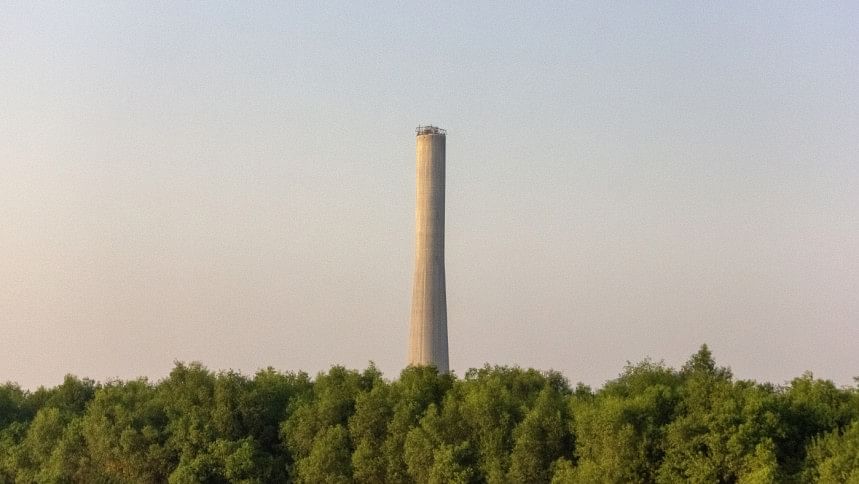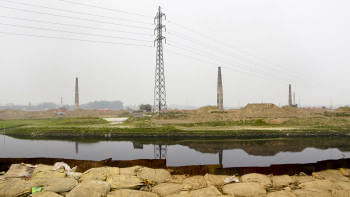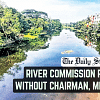Can climate education tackle the climate crisis?

Imagine watching helplessly as your home is swept away by floods, unable to do anything to stop it. That's the same sense of powerlessness many young people, including myself, feel as we witness the global climate crisis unfold right in front of us.
The challenges of rising temperatures, devastating floods, and frequent natural disasters, are becoming more apparent with each passing day.
A recently published World Bank report, Choosing Our Future: Education for Climate Action, highlighted the important role education plays in empowering young people to participate in climate mitigation and adaptation. Education has the potential to build critical thinking, shape behaviour, and equip students with the skills required for a green transition.
However, according to the report, a significant gap exists between students' desire to take action and their understanding of climate science. While 88 percent of Bangladeshi secondary students are eager to contribute to climate action, only 32 percent could correctly answer basic questions about greenhouse gases.
This knowledge gap is particularly concerning in countries like Bangladesh, where the impacts of climate change are more severe. Those facing the direct consequences of climate change are often the least informed and equipped to address them.
According to the report, nearly 93 percent of Bangladeshi secondary students believe climate change is happening, and about 40 percent feel personally affected by it. Misinformation compounds the crisis, with nearly 47 percent of secondary teachers in Bangladesh believing that climate change coverage in the media is exaggerated.
The situation is further exacerbated by climate-induced disruptions to the education system. Schools in Bangladesh frequently close due to heatwaves, floods, cyclones, and other natural disasters, severely impacting students' learning and the country's future workforce.
The report highlights that a striking 79 percent of youth across eight low and middle-income countries believe their country is in a climate emergency. This figure exceeds 90 percent in Bangladesh, India, and Kazakhstan. As climate change worsens, so does climate anxiety, becoming an "inescapable stressor".
The World Bank report emphasises that education systems must adapt to the realities of climate change by integrating climate-related content into curricula in accessible and engaging ways. This integration can occur across subjects, with reading lessons addressing forest conservation or maths classes focusing on temperature and sea-level changes.
Practical, locally relevant activities can reinforce these lessons, making climate education more relatable and actionable. Education not only combats misinformation but also builds the foundational knowledge required for climate action.
Green skills are not confined to sectors like energy and agriculture. With the right training, any job can contribute to a greener future. As green skills become increasingly in demand across industries, education systems must prepare students for the evolving labour market.
The development of STEM (science, technology, engineering, and mathematics) skills is essential for future green transitions, particularly in sectors like agriculture and energy, which are important areas for Bangladesh's economy. However, the demand for green skills is broadening across industries, meaning almost any profession can contribute to sustainability if workers are equipped with the necessary skills.
Governments must prioritise climate education and create environments where these skills can flourish. In a youth survey conducted in Bangladesh, Kenya, and Mexico, about 81 percent of youth felt that if they did not learn about green skills and how to apply them, their future livelihoods were at stake.
"Climate crisis is a children's rights crisis. Climate Change Education (CCE) is vital for equipping students with the necessary knowledge and skills to tackle climate change. Integrating scientific, interactive, and rights-focused CCE early helps children actively engage in climate change adaptations, sustainability and green practices from a young age. It fosters critical thinking, encourages innovative solutions, and empowers youth as environmental advocates. Ultimately, it prepares children to become responsible citizens of the future, capable of navigating a complex world with eco-friendly choices and contributing to a low-carbon, resilient economy," said Ms Rana Flowers, Representative to UNICEF Bangladesh.
"Climate education from a very early age can be a powerful tool to reshape and develop responsible behaviour to protect the earth from further damage. This will help the new generation not only to understand the crisis and its contributing factors, but also to prepare for and adapt to the impact of climate change. Through simple and child friendly teaching learning practice, climate education can help even a very small child to realise the value of conservation, adopting sustainable practices and role of every small action to ensure the wellbeing of all," said Nadia Rashid, Programme Manager, Education and Human Development Team, Delegation of the European Union to Bangladesh.
Since 2013, Bangladesh's National Curriculum and Textbook Board (NCTB) has integrated climate change, environmental science, and disaster management into primary and secondary education curricula in both Bengali and English. Textbooks like "Elementary Science" and "Bangladesh and Global Studies" for primary classes address these topics comprehensively.
The World Bank report also highlights that universities in low- and middle-income countries are not offering enough green skilling opportunities. Nearly 46 percent of university lecturers in Bangladesh, Kenya, and Mexico cite regulatory barriers as a significant obstacle. This misalignment between available education and the industry's need for qualified personnel is concerning.
Exposure to climate shocks like cyclones and floods has increased child marriages as families in Bangladesh use bride payments to cope with financial hardship. These climate shocks will likely increase learning poverty and disrupt educational continuity.
Rising temperatures and frequent natural disasters make classrooms less conducive to learning, while extended school closures threaten the country's long-term economic stability. Adaptation measures, like planting trees for shade or installing fans in classrooms, can help, but systemic change is needed.
However, the success of these changes depends on the country's ability to invest in education. Schools must have the resources to provide quality digital learning, teacher training, and interdisciplinary climate education. A more qualified teaching workforce is essential for delivering the climate education students need.
Climate education should not only include awareness, it should give students and young people the right skills, knowledge and critical thinking abilities. Are we doing enough to prepare the next generation for the challenges ahead?
Reference:
World Bank Group (September 4, 2024). Choosing Our Future: Education for Climate Action.

 For all latest news, follow The Daily Star's Google News channel.
For all latest news, follow The Daily Star's Google News channel. 










Comments